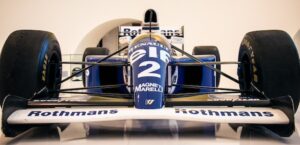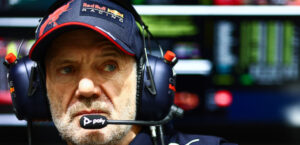McLaren-Honda heeft een medische update gegeven over de toestand van Fernando Alonso. Het gaf eveneens een verklaring voor de oorzaak van de crash.
Alonso crashte gisteren op het F1-circuit in Barcelona en werd vervolgens per helikopter overgevlogen naar een nabij gelegen ziekenhuis. Daar onderging de Spaanse tweevoudig wereldkampioen een CT-scan die een hersenschudding aan het licht bracht maar verder kwam Alonso grotendeels ongeschonden uit de crash.
Vanmiddag kwam McLaren-Honda met een mededeling waarin een medische update werd gegeven over de toestand van Alonso. Het team gaf eveneens een verklaring voor de opmerkelijk crash van Alonso.
Er werd immers meteen druk gespeculeerd over de mogelijk oorzaak van de crash. Volgens diverse geruchten zou Alonso ofwel het bewustzijn verloren hebben, ofwel een stroomstoot gekregen hebben (Lees: Kreeg Alonso stroomstoot tijdens crash?). McLaren-Honda spreekt beide geruchten echter tegen.
Alonso blijft ook nog enige tijd ter observatie in het ziekenhuis. Eerstdaags beslist McLaren-Honda of de Spanjaard kan deelnemen aan de laatste wintertest ter voorbereiding van het nieuwe F1-seizoen.
“We zijn erg tevreden dat we kunnen bevestigen dat Fernando Alonso op een solide wijze herstelt in het ziekenhuis en dat hij praat met zijn familie, vrienden en personeel van het ziekenhuis,” luidt het in de mededeling. “Hij verblijft nu verder ter observatie in het ziekenhuis zodat hij over de nodige privacy en rust beschikt om verder te herstellen van de medicatie die hij zoals voorgeschreven bij dergelijke incidenten kreeg.
Meteen na de crash startte McLaren een grondig onderzoek naar de oorzaak van de crash. De renstal tracht een verklaring te geven voor de opmerkelijke crash van de Spanjaard.
Volgens McLaren ging Alonso breed in de derde bocht, waardoor hij op een strook met kunststofgras terecht kwam. Toen zijn wagen opnieuw op de baan kwam was er een instabiliteit waarna hij met zijn wagen aan de binnenkant van het circuit tegen de muur reed.
“Volgens onze bevindingen werd het incident veroorzaakt door onvoorspelbare windstoten die zich voordeden op dat tijdstip en dat deel van het circuit. Ook andere rijders, waaronder Carlos Sainz Jr, ondervonden gelijkaardige problemen,” aldus McLaren. “We kunnen ook pertinent stellen dat er geen bewijs is dat suggereert dat er een mechanisch probleem was. We kunnen ook bevestigen dat er op geen enkel manier een verlies aan aërodynamische druk werd geregistreerd. Tot slot kunnen we ook stellen dat er geen stroomstoot was en dat er op geen enkele wijze een onregelmatigheid was met ERS, zowel voor, tijdens als na het incident.”
“Dat laatste weerlegt ook de geruchten die er zijn over het feit dat Fernando het bewustzijn zou verloren hebben alsook dat er een elektrisch probleem zou geweest zijn. Dat is simpelweg niet waar. Onze data toont duidelijk aan dat hij aan het terugschakelen was en remde. Dat zijn zaken die niet mogelijk zouden zijn indien hij buiten bewustzijn was,” besluit McLaren.
McLaren wenst Alonso uiteraard een spoedig herstel.
We geven voor de volledigheid hieronder de volledige mededeling van McLaren-Honda:
Statement from McLaren-Honda
Barcelona, February 23rd
We are pleased to confirm that, having been involved in an on-track incident at the Circuit de Barcelona-Catalunya (Spain) on February 22nd, Fernando Alonso is making a solid recovery in hospital, and is chatting to family, friends and hospital staff.
From the scene of the incident he was driven to the circuit’s medical centre, where he was given first aid and, as per normal procedures, was sedated in preparation for an air-lift to hospital.
In hospital a thorough and complete analysis of his condition was performed, involving CT scans and MRI scans, all of which were completely normal.
In order to provide the privacy and tranquillity required to facilitate a peaceful recuperation, he is being kept in hospital for further observation, and to recover from the effects of the medication that successfully managed his routine sedation yesterday.
We intend to give him every opportunity to make a rapid and complete recovery, and will evaluate in due course whether or not he will participate in the next Barcelona test.
Over the past 24 hours, we have been carrying out a detailed analysis of the damage to Fernando’s car, and its associated telemetry data, in order fully to understand the cause, or causes, of his accident. Even at this early stage, we have been able to reach some firm conclusions.
His car ran wide at the entry to Turn Three – which is a fast uphill right-hander – allowing it to run onto the Astroturf that lines the outside of the track. A consequent loss of traction caused a degree of instability, spitting it back towards the inside of the circuit, where it regained traction and struck the wall side-on.
Our findings indicate that the accident was caused by the unpredictably gusty winds at that part of the circuit at that time, and which had affected other drivers similarly (eg, Carlos Sainz Jnr).
We can categorically state that there is no evidence that indicates that Fernando’s car suffered mechanical failure of any kind. We can also confirm that absolutely no loss of aerodynamic pressure was recorded, which fact indicates that the car did not suffer any aerodynamic loss, despite the fact that it was subjected to a significant level of g-force. Finally, we can also disclose that no electrical discharge or irregularity of any kind occurred in the car’s ERS system, either before, during or after the incident.
That last point refutes the erroneous rumours that have spread recently to the effect that Fernando was rendered unconscious by an electrical fault. That is simply not true. Our data clearly shows that he was downshifting while applying full brake pressure right up to the moment of the first impact – something that clearly would not have been possible had he been unconscious at the time.
Our data also confirms that Fernando’s car struck the inside concrete wall, first with its front-right wheel and then with its rear-right. It was a significant lateral impact, resulting in damage to the front upright and axle.
After the initial impact, the car slid down the wall for about 15 seconds before coming to a halt. All four wheels remained attached to the car, but no damage was sustained by the bodywork or crash structure between the front and rear wheels.
We wish Fernando a very speedy recovery. As and when we have further updates to share, we will of course do so.
a:0:{}
Gewoon nieuwsitem
a:0:{}







